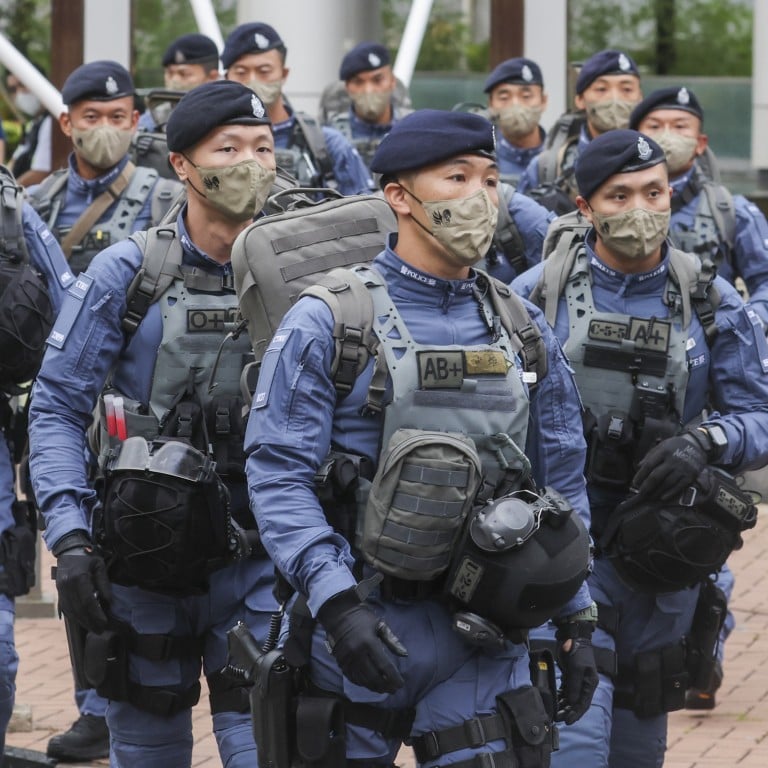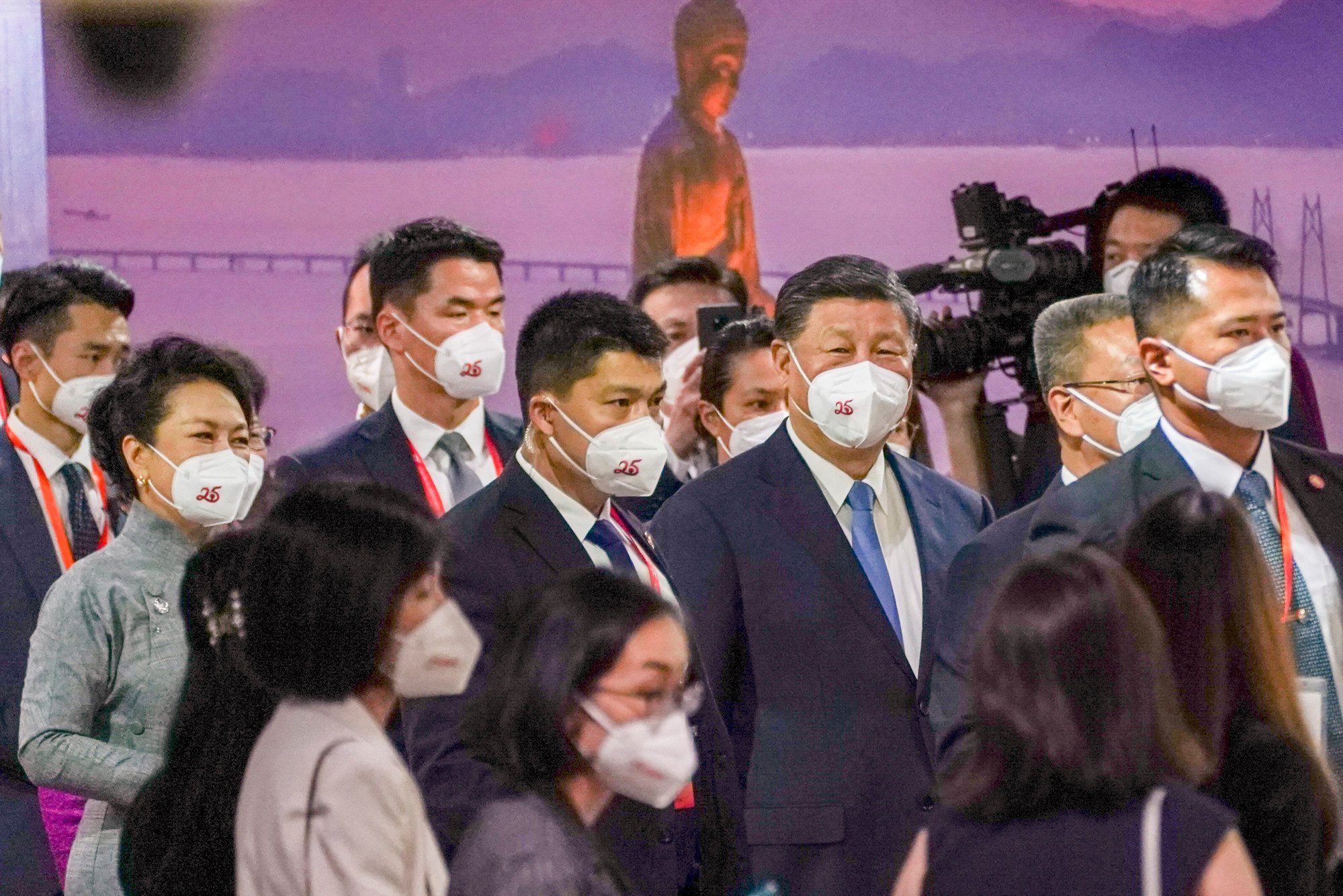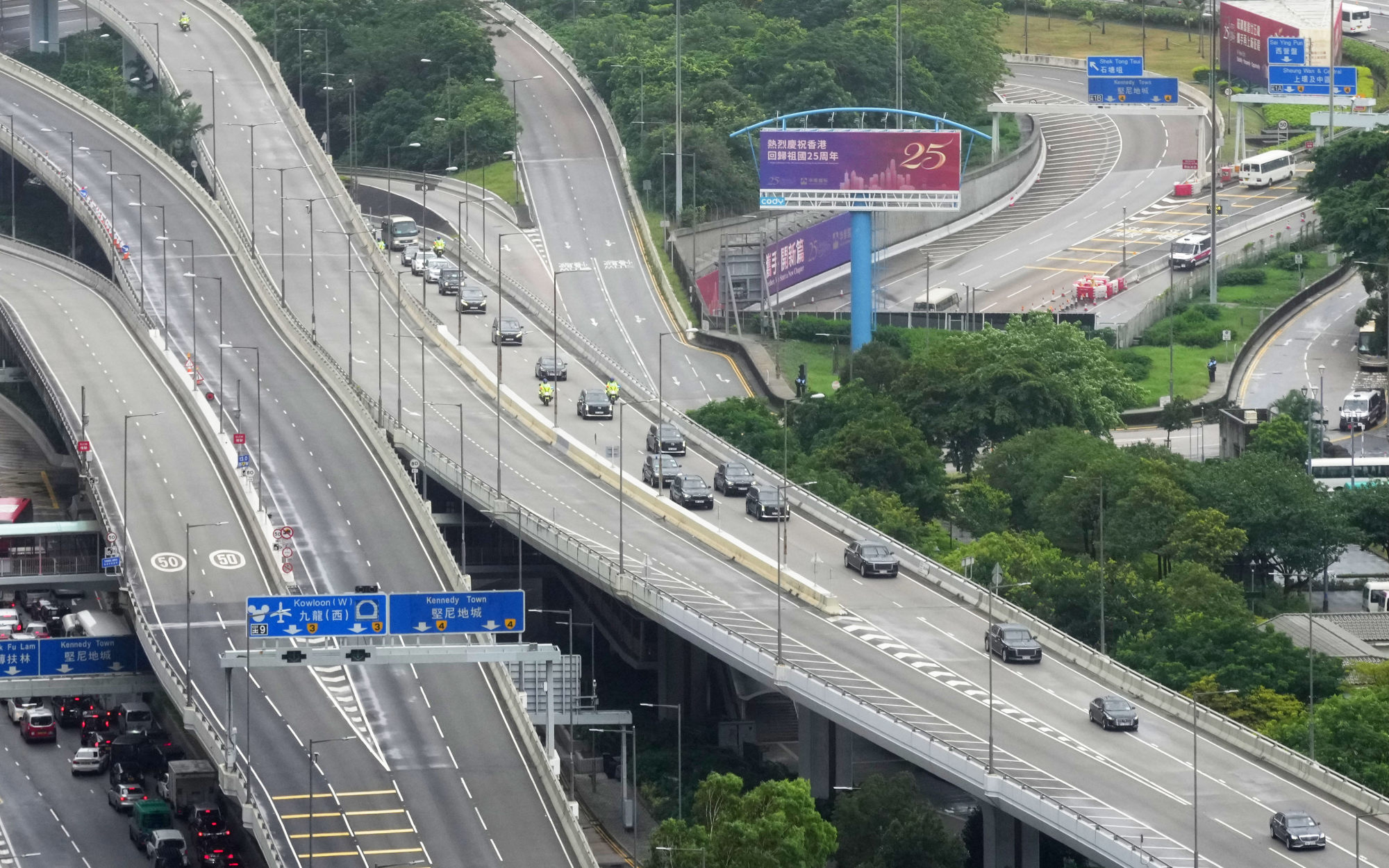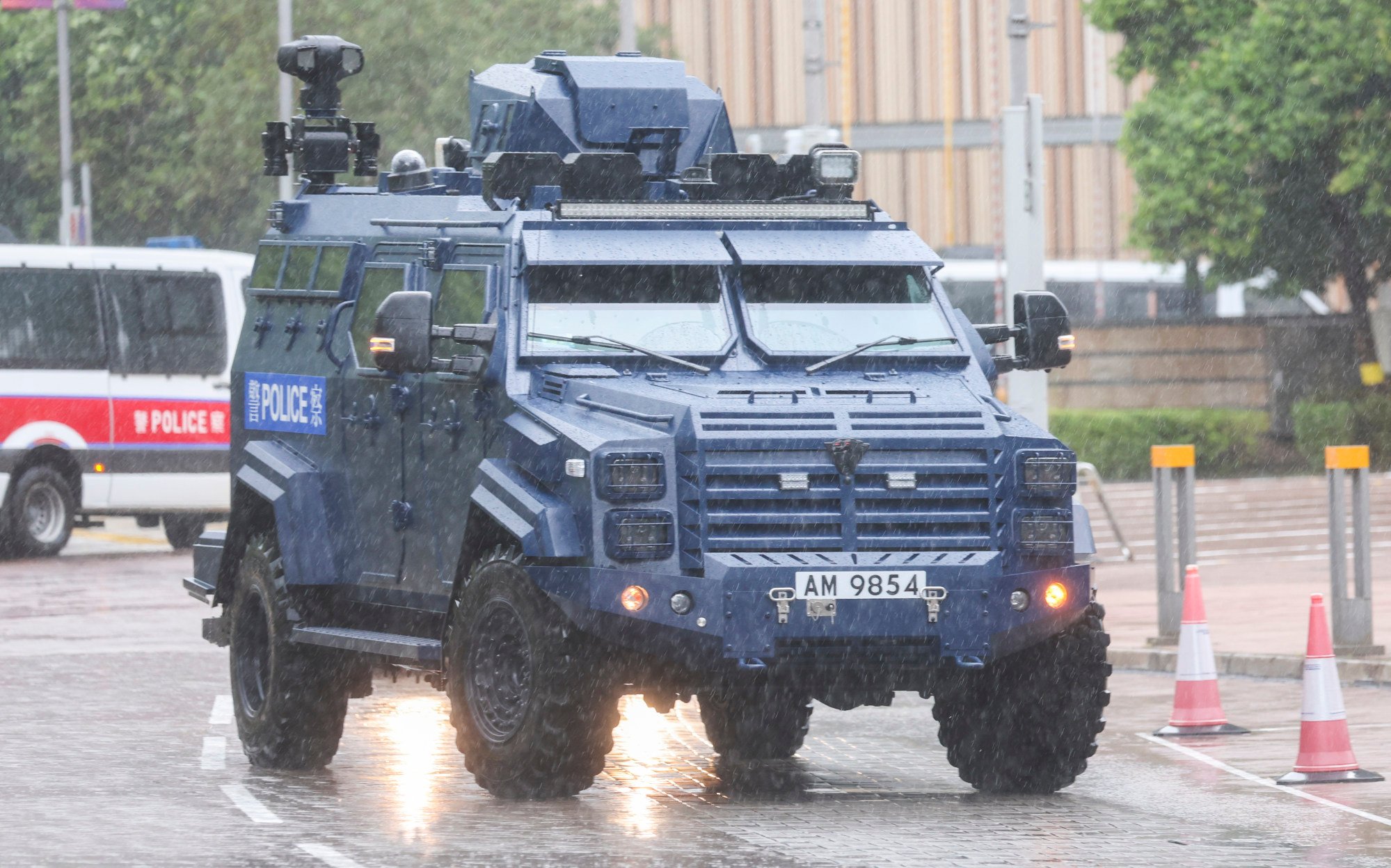
Ballistic briefcases, machine guns and a bulletproof car: the unprecedented security blanket thrown around Hong Kong for Xi Jinping’s visit
- All law enforcement agencies have been mobilised to protect Xi and his entourage during two-day visit to mark handover anniversary
- Anti-riot armoured vehicles, dubbed ‘Sabre-toothed tigers’, were also deployed by police to patrol streets
An unprecedented security blanket involving elite bodyguards, a 50-strong motorcade, ballistic briefcases and machine guns has been thrown around Hong Kong for President Xi Jinping’s visit for the 25th anniversary of the city’s return to Chinese rule, the Post has learned.
Security was raised to the maximum when Xi, 69, and his wife Peng Liyuan, 59, arrived in Hong Kong on Thursday for the two-day trip to mark the handover anniversary as authorities mobilised all law enforcement agencies to protect the Chinese president and his entourage from terrorist attacks.
The couple was escorted by elite officers from the force’s VIP protection unit, formerly known as G4, along with personal bodyguards from the Central Security Bureau as they arrived at the West Kowloon high-speed rail terminus on a special train from Shenzhen shortly after 3pm.

Some of the armed officers from the protection unit were seen carrying lightweight ballistic briefcases that could be converted into fold-out bulletproof shields or blankets to provide protective coverage within a matter of seconds.
Outgoing Chief Executive Carrie Lam Cheng Yuet-ngor, who greeted the president at the train platform, was also accompanied by officers from the protection unit, including Yip Kwan-yau, who was previously attached to the airport security unit in 2013 and has protected her since 2017.
A source said some elite officers had carried machine guns disguised as briefcases so they could take immediate action in the event of danger.
A long motorcade, comprising up to 50 police vehicles, was seen each time Xi was out on business. The convoy was led by police motorcycles from the force’s escort team as well as a rare vehicle from its explosive ordnance disposal team, which can shut down any nearby phone and network signals to stop anyone from setting off bombs remotely.

Xi was seated in a bulletproof four-door Honqi sedan, a luxury Chinese car which has been used by leaders of the ruling Communist Party from the time of its founder Mao Zedong. Some vehicles in the motorcade were manufactured by Guangzhou Automobile Group.
The official state cars were surrounded by protection unit vehicles. A few even kept their doors slightly open whenever the motorcade left or approached a venue to allow armed officers to jump out of the cars instantly to attack or defend against any potential threats.
There was also a government helicopter for aerial protection.
Traffic lights were all blocked as the motorcade did not stop during the trip to prevent the heightened risk of being targeted if it remained still.
President Xi Jinping’s visit to a laser equipment maker signals tech focus
When Xi paid a three-day visit to Hong Kong in 2017 to mark the 20th anniversary of the handover, he was driven in a BMW 7 series sedan.
Hongqi, which means red flag in Chinese, resembles a traditional symbol for the Communist Party and was founded in 1958 by China First Auto Works (FAW) Group. Being the oldest Chinese passenger car marque, it has long been the official vehicle for the country’s high-ranking government officials and visiting dignitaries.
Mao was escorted in the vehicle during former United States president Richard Nixon’s historic visit to China in the 1970s. But the brand fell out of favour in the 90s as Chinese leaders switched to imported vehicles.
In 2012, Xi laid down a directive to Communist Party cadres requiring that they eschew foreign wheels in favour of Chinese vehicles.
In 2018, Xi rode in bulletproof Hongqi limousines during a three-nation swing through Southeast Asia and the Pacific. The move was seen as an attempt to promote the Chinese brand on the international stage.
Police also deployed newly bought anti-riot armoured vehicles dubbed “Sabre-toothed tigers” to patrol the streets. The bullet-and-explosion-proof models are equipped with multiple launchers for firing various types of less-lethal ammunition. Advanced recording systems were also installed.

Police on Tuesday said while the threat level remained “moderate”, it had banned the use of drones during Xi’s visit after a “strict risk assessment” that took into consideration the practice of overseas authorities, technological advances in aircraft and their use in carrying out potential attacks.
The Civil Aviation Department has designated a temporary restricted flying zone in the vicinity of Victoria Harbour and several other areas.
Ip Kwok-him, a member of Lam’s de facto cabinet, said he believed that Xi would not spend a night in Hong Kong but instead return to Shenzhen on Thursday night due to security concerns.
“It’s more feasible to provide a watertight security blanket for the president in the government’s guest houses in Shenzhen,” he said.
Additional reporting by Tony Cheung and Gary Cheung

